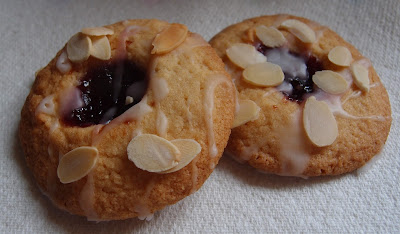There
is something about a bank holiday weekend that just makes you feel like you
have more time for everything, including baking. I wanted to bake
something that was rich and indulgent, and would also be a fancy treat across
the whole three days. I don’t usually make baked cheesecakes but the
minute I laid eyes on this one, on the BBC Good Food website, I knew it had to
be!
Just
reading the ingredients list indicated that this was going to be rich, rich,
rich! I tried to balance it by serving with fresh raspberries. Any acidic
fruit would work well such as rhubarb or citrus.
The
texture of this cheesecake is beautiful – I often find that baked cheesecakes
can be a bit dense and heavy, resulting in that squeaky tooth feeling. This one is light and almost mousse-like, but
unmistakably a cheesecake. Surprisingly,
it isn’t too sweet either.
It’s
possibly the first time I’ve made a baked cheesecake where I avoided a split on
the top as it cooled. I think I’ve had
this in the past because I’ve overbaked it and not trusted that it would firm
up enough during cooling; this time I made a conscious effort to turn the oven
off after an hour even though the cheesecake looked barely set.
This
makes a big cheesecake but don’t worry if you don’t want it all at once.
Cut it into slices and freeze for future treats! Or eat it all up in a couple
of days – I won’t judge you.
Ingredients
For
the base:
200g
digestive biscuits, or Hobnobs
85g unsalted butter
For
the topping:
400g
white chocolate
300ml double cream
400g cream cheese – I used Philadelphia
4 eggs
1 teaspoon vanilla extract
To
serve: raspberries
Method
Preheat
the oven to 180C/fan 160C/350F/gas mark 4.
Blitz
the biscuits in a food processor and then add the butter (no need to melt if
you’re using a food processor) and blitz again until combined.
Press
into the base of a 23cm round springform tin.
Bake
for 10 minutes, then leave to cool.
Reduce
the oven to 140C/fan 120C/280F/gas mark 1.
Wrap
the outside of the cake tin tightly in 2-3 layers of foil – this is to make it
waterproof for its water bath later!
Now
make the topping: Place the chocolate and the cream into a saucepan and melt
together over a gentle heat.
Leave
to cool for 5 minutes.
Beat
together the cream cheese, eggs and vanilla.
Add
the cooled chocolate cream mix and beat until smooth.
Place
the tin (wrapped in foil) in a deep roasting tin and pour the filling into it.
Pour
boiling water, from the kettle, into the roasting tin so that it comes about
halfway up the side of the cake tin.
Bake
for 1 hour, then turn the oven off.
Leave
the cheesecake to cool in the oven for 1 hour with the door closed, then for
about another hour with the door slightly ajar.
Remove
the tin from the water bath and remove the foil.
Cover
the top with clingfilm and refrigerate until about 10 minutes before you wish
to serve it.
Serve
either on its own, or with some fruit for a fancy dessert.
Bask
in the glory of the wonderful thing you have created.
Eat.



















































